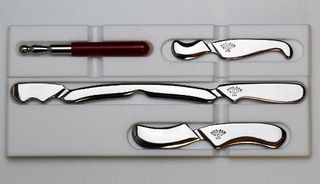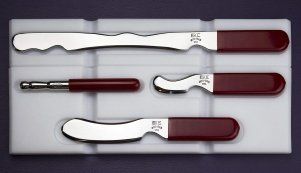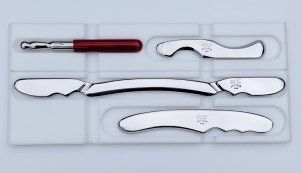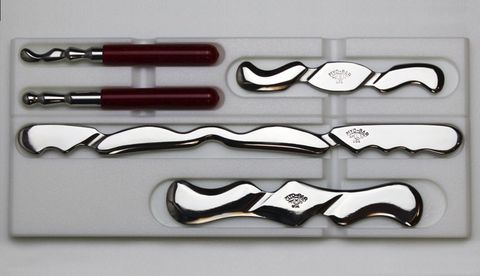Health Professionals
Full Featured "Workhorse" IASTM 4 piece Sets for Health Professionals
Clinicians can treat the majority soft tissue concerns with four "scaled to anatomy" IASTM instruments. For a given region you would usually only need to use a single tool. Within each tool (S) small, (M), medium, & (L) large you will have appropriately sized convexity, concavity, and prow.
As an example, when treating epicondylosis, you would likely choose a (S) small tool. Not only does the profile correctly fit the tissue, but the tool is easier to manipulate (more comfortable) for shorter strokes in "the pen hold." It may be tempting to use one sized tool for all anatomical areas of the body, but this quickly becomes tiring if you do myofascial treatments on several patients a day.
On bigger anatomy, you can do much longer and deeper strokes with an (L) bar in the quadriceps, hamstrings, or erector spinae. Using a small tool on large muscle/fascia groups would require you cover a lot more ground with shorter strokes and also require more pressing effort. The reverse is true on a small fibrous lesion along a tendon- trigger finger for instance, where it would be awkward to use a bulky instrument for fine detailed application.
The Trigger Point Tool is included in all clinical sets, because it adds so much more range and versatility of treatment. "Riving" is when you work parallel between fibers (think wrist extensors, or hamstrings) and is much more easily performed with a "ball end" vs. beveled edge. The "point" contact also gets easily under the SCM or Scapula where edges are hard to maneuver, and is easy to apply through cloths near sensitive areas like sternum, coccyx, and inguinal area.
The MyoBar style series you choose comes down to personal preference.
Do you prefer a few more contact features like the LRE (large radius edges) and integral profile ergonomics (Healing Edge) vs. streamlined simplicity and the red handled grips (R+)? Do you prefer the ambidexterity of double bevel or, are you used to single bevel GT profiles (G+)?
Advanced Practice Sets
Ultimate IASTM 5 piece Sets for Soft Tissue Specialists
If you are a soft tissue specialist who makes myofascial work a key component of most patient therapies there are some additional features in our five piece Advanced Practice sets.
The first thing you will notice is the addition of the Detail tool.
This is the ultimate in comfort for the practitioner when performing fine strokes along tendons, loosing up a nerve channel, and working on joint capsules or ligaments. In my 20 year soft tissue experience I have found many "pea sized" or smaller lesions at the heart of a movement restriction.
Here are some more features:
- Tendon notch eases pressure to prevent "squashing" of achilles and hamstrings tendons,
- "Olecranon" deep fascia barrel (DFB) edge does everything you ever wanted your elbow to do with much less awkward positioning and strain on your body.
- Tissue reliefs (Healing Edge S3 & M3) provide better tracking on the tissues as well as deeper edge penetration with less patient discomfort.
Going with HE 2 or HE 3 is a personal choice. Many people like the symmetry of the 2's that enable to them to "flip" the tool between SRE (small radius edge) and LRE (large radius edge) and keep consistent tool/tissue contact. Those that primarily use the traditional SRE (small radius edge) will enjoy the scalloped handles and tracking of the tissue reliefs in the Healing Edge 3's.
